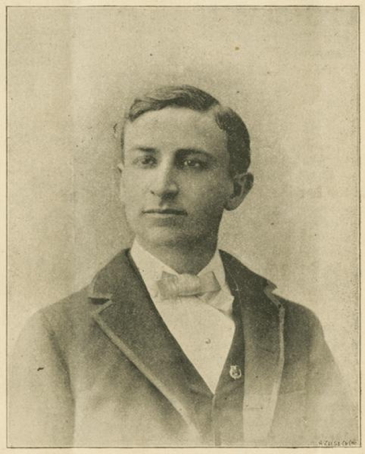Liberty Matters
Capital and Production Goods
 Matt McCaffrey chides his commentators for failing to criticize him. Accordingly, in order to rectify this, in this note I will I will provide a few words to suggest that maybe he has not quite captured Fetter's understanding of capital.
Matt McCaffrey chides his commentators for failing to criticize him. Accordingly, in order to rectify this, in this note I will I will provide a few words to suggest that maybe he has not quite captured Fetter's understanding of capital.McCaffrey says, "[A] complete rejection of the physical-capital approach would carry a heavy cost, namely, giving up key insights into capital heterogeneity." I think this is quite misleading. Actually, it's the opposite of the truth, specifically: having come to a good understanding of the heterogeneous nature of capital goods (production goods) one cannot avoid the realization that the only way to deal with the bewildering variety of productive resources is in terms of value as calculated by those making decisions as to their use.
Mises is clear that he thinks that the use of the term capital good is unfortunate and that something like production good would be better because capital is at its very core (and in its origin) a value concept. If we abandon the use of the term capital for physical things, many problems disappear and one is able to address the heterogeneity of resources without theoretical problems. One can imagine categorizing all productive resources as functionally identical production goods (produced, natural, and human). In a market economy each type of employed production service will carry a price, the rent on the stock employed, on the basis of which decisions will be made about their use. In no way does one have to reject the notion of heterogeneity, and adopting Fetter's framework does not carry any cost in this regard. Rather, the opposite: it invites a greater appreciation of it and how it is dealt with in a market economy (and only in a market economy).
And though it is true that the Austrians, beside Mises (but see Braun 2017 and Braun, Lewin, and Cachanosky 2016), invite confusion on this matter, in fact they themselves are not confused, simply inconsistent. For example, both Hayek and Lachmann wrestle in places with the connection between value and quantity in talking about capital. This underlies much of Hayek's work in the Pure Theory of Capital (1941), where he tries to express the dimensions of time, quantity, and value in challenging three-dimensional diagrams. And his verbal ruminations are replete with comments about the relationship among these dimensions. (See Lewin and Cachanosky 2019, section 5.) Lachmann too tries to address the question of the value of capital goods. The clearest statement by Lachmann is perhaps the following:
[C]apital-goods have a value dimension as well as their physical dimension. While in terms of the latter capital is of course heterogeneous, in terms of the former diverse capital-goods may be reduced to homogeneity. In fact, in planning and carrying out plans this has to be done since the planner has to match means with ends and, except for sums of money, almost all his means are capital-goods. He has to evaluate them in order to make them commensurable to each other as well as to his ends. Every plan, simply for the sake of the comparability of the means it employs, has to assign values to its capital inputs. Plan failure and consequent revision will probably entail changes in the evaluation of capital-goods, but it is a peculiar aspect of our problem that even while the plan proceeds satisfactorily with no unexpected change in the workshop or market, planners may have reason to change capital-values. Changes in the value dimension may not be accompanied by any other observable event. [Lachmann 1986, 79, italics added]
Earlier he says: "We might say of course that the firm will act in such a manner as to maximize the present-value of its expected future income stream," but immediately adds, "but such a description … is of little use to us." (Lachmann 1986, 64)[15]
In addition, in his consideration of the phenomenon of capital maintenance, Lachmann adopts an approach (citing Hayek 1935) that entails keeping the capitalized value of the expected income stream intact. This implies using a value approach to the estimation of depreciation and resorting to accounting and financial conventions.
Fetter's approach is an interesting combination of simplicity and common sense on the one hand and apparent profound insight on the other. The second impression is the result of the contrast it provides to the convoluted journey mapped out by the history of capital theory. From Adam Smith through Böhm-Bawerk to the modern production function, by focusing on the physical components of the production process to the detriment of the process by which they are valued, capital theory became a morass of convoluted logic and controversy that could have been totally avoided by joining the works of Fetter, Fisher, and Hicks. Mises comes very close to doing this but fails to incorporate Hicks's insights.
Endnotes
[15.] As I shall note below, claiming that the ideas of present value is of "little use to us" turns out to be astoundingly wrong – and Lachmann could (should?) have known this from Hicks's (1939) very clear demonstration of the connection between present value and Böhm-Bawerk's notion of roundaboutness.
Copyright and Fair Use Statement
“Liberty Matters” is the copyright of Liberty Fund, Inc. This material is put on line to further the educational goals of Liberty Fund, Inc. These essays and responses may be quoted and otherwise used under “fair use” provisions for educational and academic purposes. To reprint these essays in course booklets requires the prior permission of Liberty Fund, Inc. Please contact oll@libertyfund.org if you have any questions.